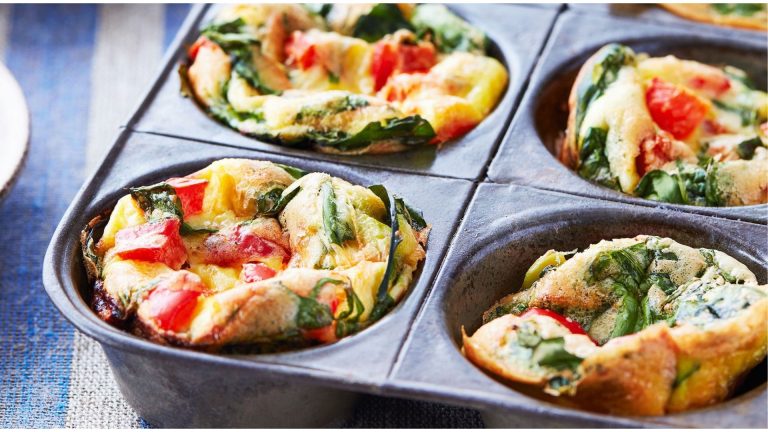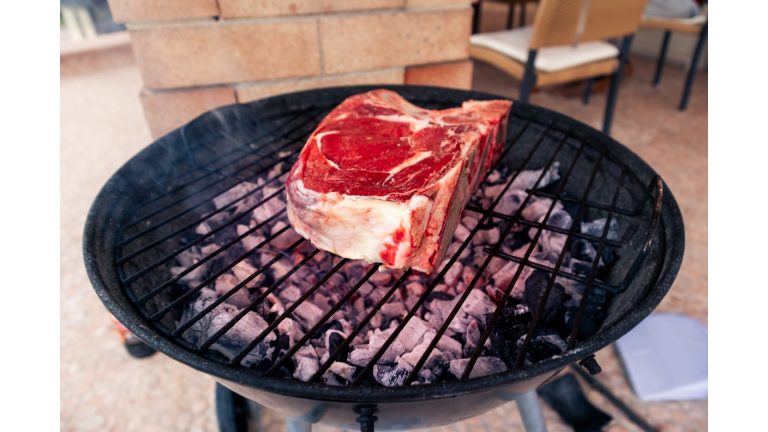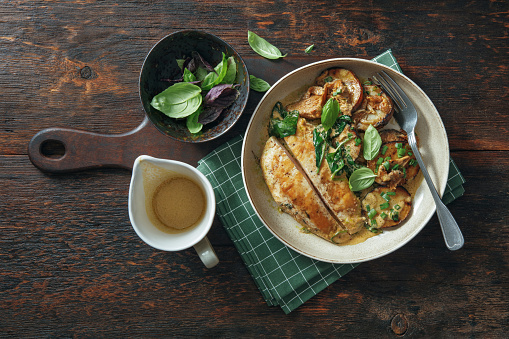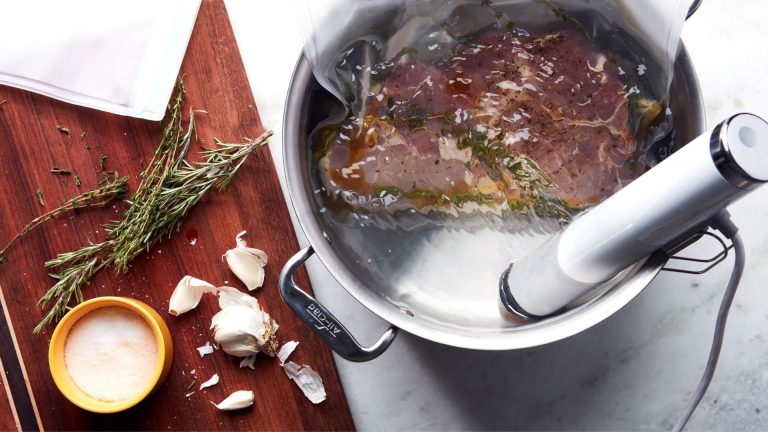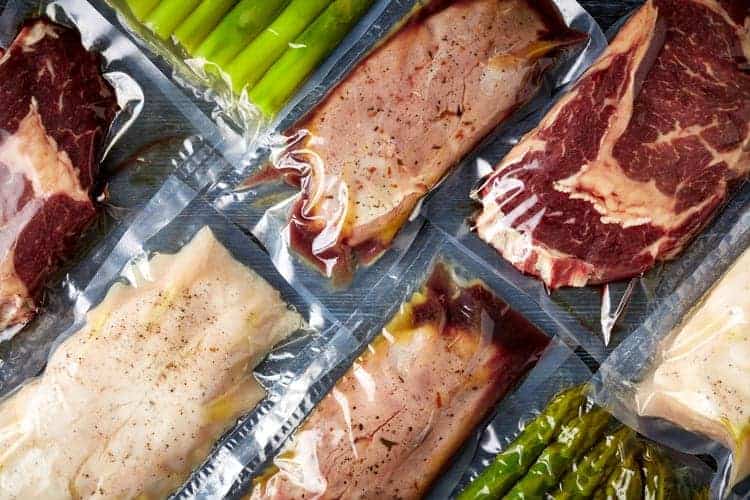How to Sous Vide Chicken Breasts?
I like to cook chicken breast in a sous-vide way, they are more tender and juicy than ones that have been traditionally cooked.
- I prefer my chicken breasts to be cooked at 140F (60C) until pasteurized, but they are safe as low as 136F
- And some people like them as high as 150F
It usually takes two to three hours.
Table of Contents
How to Sous Vide Chicken Breasts?
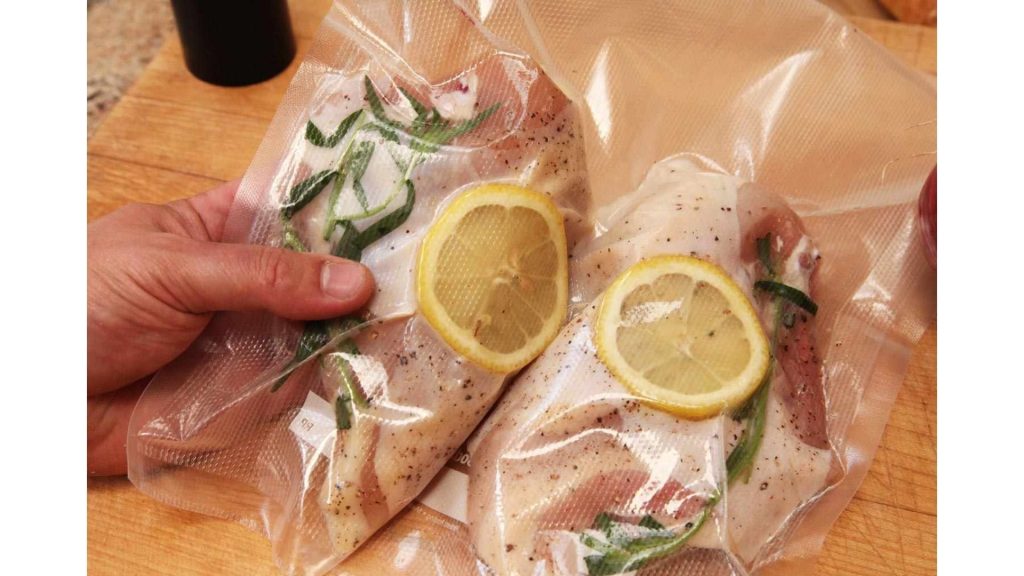
Chicken breasts are one of my favorite dishes to cook. Chicken cooked sous-vide is more tender and moist than it is traditionally cooked.
You can cook chicken at much lower temperatures than you can if you grill or pan fry it because of the longer cooking times.
This is because pasteurization occurs over time, so you can go with a lower temperature.
I like to cook my chicken breasts at 140F (60C) for two to four hours. It’s safe as low as 136F (57.8C), but they are a little too raw-tasting for me.
Some people like them as high as 147F (64C) but I find them a little too dry for my liking. They need to be cooked long enough to pasteurize them at any temperature.
I have opinions about searing the chicken breast after sous-viding it. It can be difficult to get any browning without overcooking it, but it looks better when it’s seared.
If I’m using the breast as the center of the dish, I’ll usually sear it, but if it’s just for me, I’ll eat it straight from the bag.
The skin in the pouch can be hard to cook due to the moist nature of the cooking process.
The best way to remove it from the bird is to cook the meat sous-vide and then serve it in an oven that is at least 350 degrees.
When I’m feeling lazy, I’ll just sear it for a little longer and make sure the skin is good for a normal meal.
You can use the chicken in several different ways once it’s cooked. I like to use it on salads, soups, or even breaded and fried!
How Long to Sous Vide Chicken Breast
Chicken breasts are usually cooked long enough to be Pasteurized so that they are tender.
The pasteurization tables will give you specifics based on the thickness and the temperature you use, but this usually takes 2 to 3 hours.
Pasteurization takes longer at lower temperatures. Because they are already tender. Sous vide chicken breasts don’t benefit from the long cooking times.
After about 4 or 5 hours the meat begins to get too tender and squishy. It’s not ruined, but it does lose a lot of the spring that makes chicken delicious.
Best Sous Vide Chicken Breast Temperature
Compared to traditionally cooked chicken breasts, you have more options for the temperature you want to use with sous vide.
Most people don’t go below 136F (57.8C), so you can drop the temperature a bit but still be safe.
I settled on 140F (60C) as the best temp for my chicken breast because I have been experimenting a lot over the years.
It tastes like a “cooked” texture to me, but it’s still super juicy. Some people prefer a few degrees higher to make sure the texture is cooked.
If I am going to serve it cold, I’ll use a slightly higher temperature.
For a more traditional texture, people will go as high as 150F or 160F (64C to 71C). The temperatures used when grilling or pan-frying chicken is closer to this one.
I highly recommend keeping the temperature at or below 154F. The meat starts to get a lot more dry and moist when it is above that temperature.
If you want shredded chicken breasts, the higher temperatures will break them down more.
Benefits of Using Sous Vide
The ability to create a perfectly cooked chicken breast with very little effort and allowing you to cook the chicken to lower temperatures than would be safe using traditional techniques is one of the main benefits of sous vide chicken.
Chicken that is cooked below 140 degrees can have a different texture, and Chicken that is cooked below 154 degrees can have a more moist texture.
Water loss speeds up as hotter the meat gets, so keeping the temperature of the chicken below 154F (68C) slows down the loss of hydration.
I like to cook the chicken breasts in sous-vide before the party so that they can be reheated on the grill during the party.
I don’t have to worry about making someone sick, the chicken always turns out amazing.
Frequently Asked Questions
Can You Sous Vide Frozen Chicken Breast?
Of course. You can freeze chicken breasts directly from the freezer, but there is no need to thaw them.
I don’t take frozen chicken into account when calculating pasteurization time, but it adds an extra 30 to 60 minutes.
Chicken breasts are more prone to floating, which is the only downside to sous viding them. I usually use something to keep the bags out of the water, usually magnets or clips.
How to Chill Sous Vide Chicken
You can chill chicken breasts in a bag if you want to serve them cold or save them for later.
The 3-step chilling method is what I use most:
- Take the bag out of the water bath and let it rest for 10 minutes.
- For another 10 to 20 minutes, I put it into cold tap water.
- If I want to make sure it’s very cold, I’ll put it into an ice bath and make sure it’s fully chilled.
- The chicken breasts can be kept in the fridge for a week or two, still in their pouch.
Reheating Chicken Breast with Sous Vide
Chicken breasts can be reheated using a sous-dimer. Don’t warm the chicken above the original temperature.
I usually use a temperature of 10 to 15 degrees lower to give it a longer sear. If you want to quickly reheat sous vide foods, you can sear them back to temperature, chop them up, or cook them in a sauce or soup.
Some people don’t like the texture of cooked and chilled chicken breasts, but I love to eat them at any time.
Can you Overcook Chicken in Sous Vide?
When people think of cooking, they usually think of temperature. If you let it go too long on a grill or in an oven, the temperature will rise too high.
The temperature of the meat will never go above the temperature of the water bath, so it’s not possible to overcook chicken breasts with sous vide.
The more time you cook something, the more tender it becomes. The extra cooking time can start to harm already tender items like chicken breasts, sous-vide filet mignon, or sous-vide pork chops.
What are the Best Sous Vide Breast Temperatures and Times?
- Medium-Well: 149ºF for Pasteurized by Thickness (65.0ºC)
- Medium-Rare: 137ºF for Pasteurized by Thickness (58.3ºC)
- Ideal: 141ºF for Pasteurized by Thickness (60.6ºC)
These are the best Sous Vide breast temperatures you can use for cooking.
Should You Brine Sous Vide Chicken?
I don’t brine my food, except for my sous-vide fish. I go into a lot of reasons to brine sous-vide food, but in general, the meat is already so juicy and moist, that adding more moisture is almost a negative.
If you love to brine chicken breasts, go ahead and give it a try, you may love it.

Foodie and a passionate cook, I am here to share all of what I know about cooking, kitchen, and food prepping.
Follow me for delicious and healthy recipes.

